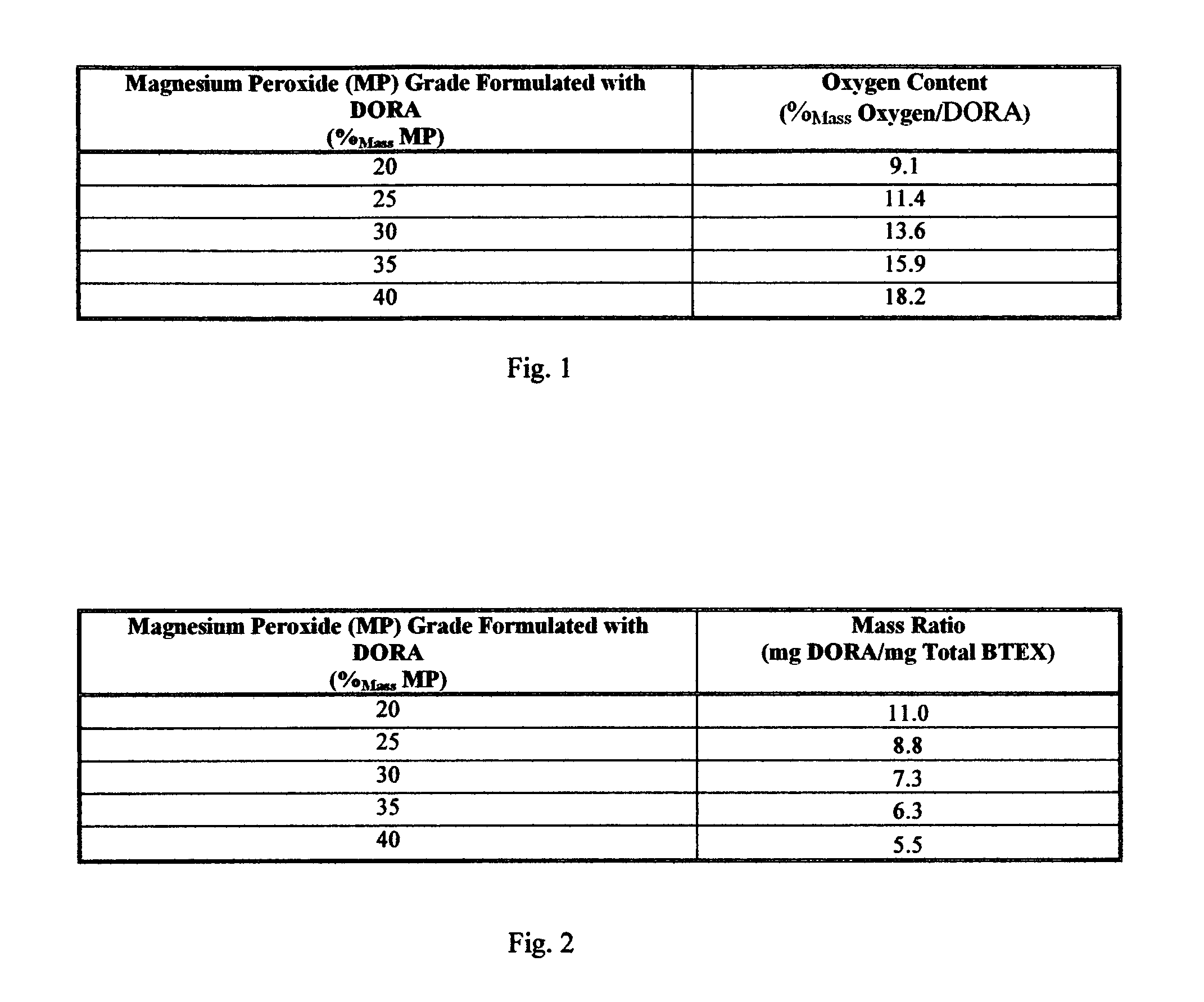Dissolved oxygen releasing compound
a technology of dissolved oxygen and compound, which is applied in the field of biological stimulants, can solve the problems of compound being useless as a bioremediation product, peroxides tend to dissociate quickly, and the rate of magnesium peroxide dissociation is reduced, and the biological degradation of contaminants such as petroleum hydrocarbons is enhanced
- Summary
- Abstract
- Description
- Claims
- Application Information
AI Technical Summary
Benefits of technology
Problems solved by technology
Method used
Image
Examples
Embodiment Construction
[0016] Magnesium peroxide disassociates upon hydration to yield dissolved oxygen and the cation magnesium (II). In order to slow the disassociation process, the magnesium peroxide is blended with a binding agent. The resulting dissolved oxygen releasing blend must be readily and inexpensively manufactured, and also release significant concentrations of dissolved oxygen over an extended period of time, on the order of six months or more.
[0017] The disassociation of magnesium peroxide to dissolved oxygen is primarily controlled by kinetic processes. Therefore, the binding agents used must slow the kinetics of magnesium peroxide disassociation. In the present invention, a powdered phyllosilicate is used as a binding agent to reduce the hydraulic conductivity of magnesium peroxide, thereby reducing the rate of dissolved oxygen release. In the preferred embodiment, the powdered phyllosilicate used is Bentonite.
[0018] A variety of blends of magnesium peroxide and powdered Bentonite were...
PUM
 Login to View More
Login to View More Abstract
Description
Claims
Application Information
 Login to View More
Login to View More - R&D
- Intellectual Property
- Life Sciences
- Materials
- Tech Scout
- Unparalleled Data Quality
- Higher Quality Content
- 60% Fewer Hallucinations
Browse by: Latest US Patents, China's latest patents, Technical Efficacy Thesaurus, Application Domain, Technology Topic, Popular Technical Reports.
© 2025 PatSnap. All rights reserved.Legal|Privacy policy|Modern Slavery Act Transparency Statement|Sitemap|About US| Contact US: help@patsnap.com


